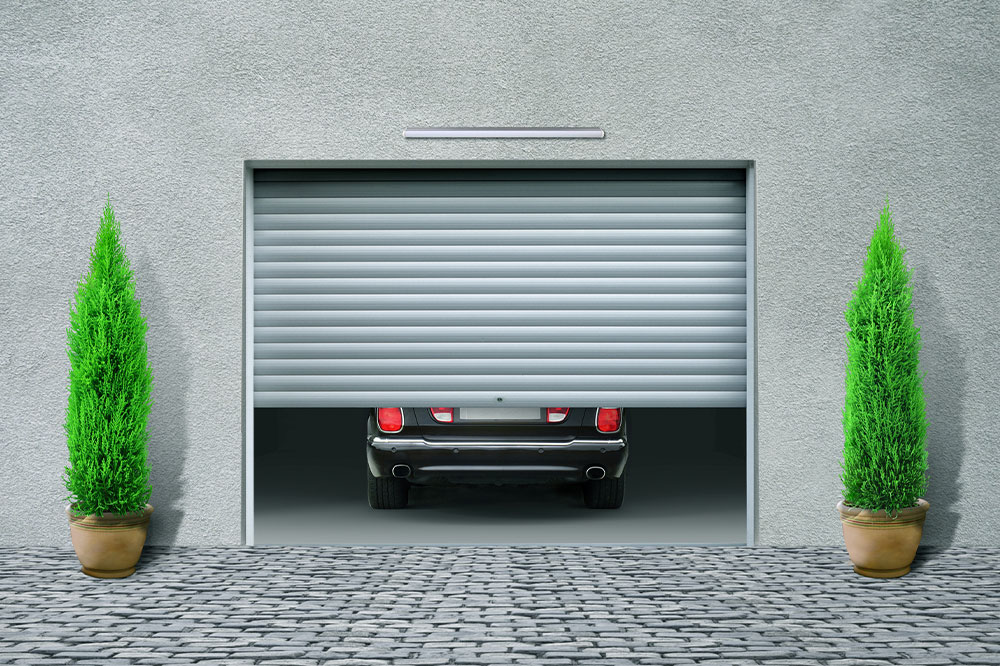
5 factors to consider while shopping for garage doors
A garage door not only adds function but also gives an opportunity to add style and value to one’s home. Choosing the right garage door can be a challenging decision as you need to consider various factors like material, insulation, and other accessories. Considering it as a one-time investment, you need to consider the following factors when buying a garage door to make sure your investment pays off. Read to know more.
Materials
This is an important factor to consider when buying the best garage door for your house. A garage door is made from the following materials.
- Steel
Garage doors made from steel are backed by rigid foam for insulation. While the strongest steel is 26-28 ga, garage door panels are generally 24-ga and further embossed with a wood-grain pattern or smooth finish. Garage doors with a baked-on primer and polyester topcoat maximize rust protection, with a 10-year warranty. If you want a garage door made from a lighter metal, consider aluminum garage doors, as they are dent-resistant than steel. However, the same depends on the quality and grade of aluminum used. - Wood
With the use of steel frames in the most garage door, wood, which was once a mainstay for garage doors, does not have much of a market. This is due to its frequent maintenance and painting. Most garage doors you find today are made with a hemlock frame and hardboard panel. Although they are high maintenance, these garage doors are backed by a warranty of more than ten years. - Plastic
Garage doors made from plastic are fairly new in the market. Plastic garage doors are light and durable like steel and do not require frequent maintenance like wooden garage doors. Garage doors made from these materials are corrosion, rot-free, and operate silently. Some plastic garage doors contain UV-resistant additives that prevent fading even under the harshest sun. Plastic doors have the longest warranty of almost 20 years.
Size
Once you have decided on the material, determine the size of the garage door for your house. Typically, single-car garages require garage doors that are 8 to 9 feet wide and 7 to 8 feet high. Double car garage doors have the same height. However, they are 16-feet wide. Other factors that help determine garage door size include:
- Headroom
This is the space near the ceiling for an open door, overhead tracks, and springs. Experts recommend allowing a minimum of 10-inches for extension springs and 12-inches for torsion springs without any obstructions. - Backroom
This is the space required for installation that should be equidistant from the garage door opening to the back wall. - Side room
It is the distance on either side of the door. Vertical tracks with standard extension or torsion springs need a space of at least 4.5 inches on each side.
Layers
Based on the materials used in the garage doors, there are three basic types of layers in a garage door.
- Single-layer
The basic type consists of a simple outer layer. Although single-layered garage doors are low-cost and put the least strain on springs, these provide minimal insulation. - Double layer
Double-layered garage doors have inner and outer skin with a layer of polystyrene in between. This arrangement ensures good insulation. - Triple-layer
These types of garage doors are the strongest in the market and provide thermal resistance. Triple layers consist of an additional layer of galvanized steel on the interior to protect the insulating layer.
Styles
Once material, size, and a number of layers have been shortlisted, find out which style of garage door matches your home:
- Classic Style
Classic style garage doors are the most economical option that has the operation of both manual and automatic opening functionality. They can be of various colors and insulation choices and can be customized. - Carriage style
Carriage-style garage doors are suited for homes that are reminiscent of older architecture. These garage doors typically look like swing-type doors but open upward like overhead-operating modern garage doors. - Raised panel
While carriage-style garage doors are known for their elegant looks, flush panels are flat and slightly textured. Long panels and short panels are more suited for a home with Victorian, Colonial, and Tudor themes.
R-Value
This is the most important factor when buying a garage door, especially when living in areas that witness all four kinds of weather. R-value defines garage doors’ extent of insulation. A garage door with a 0.0 R-value indicates it is uninsulated. Hence, the higher the R-value, the greater the insulation. Moderate to temperate climates can have garage doors with an R-value of at least 3, whereas harsh climates require garage doors with an R-value of at least 10.




